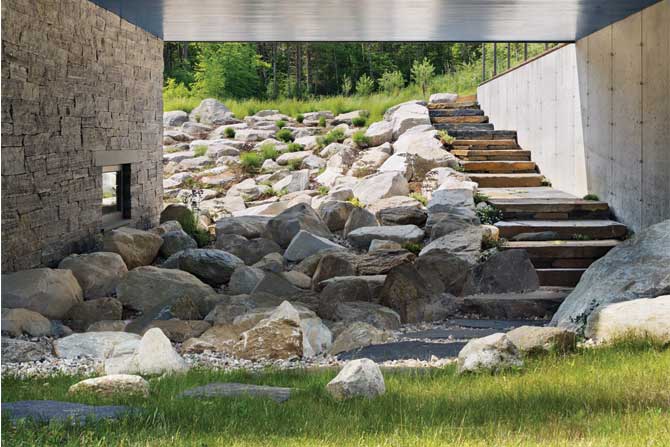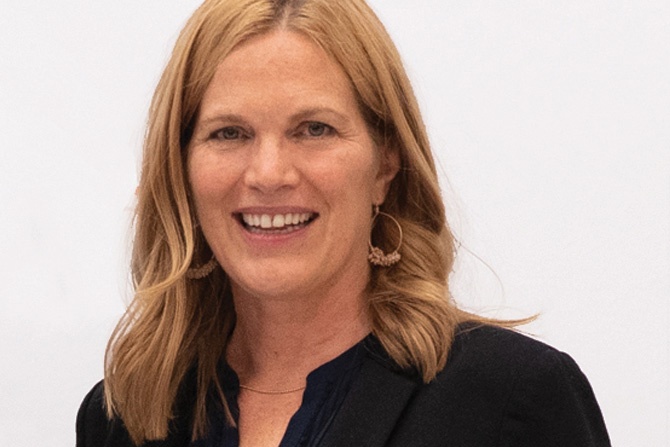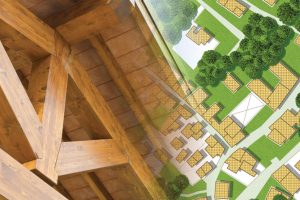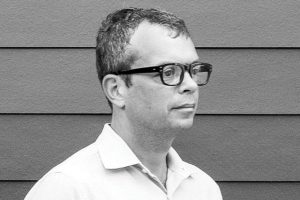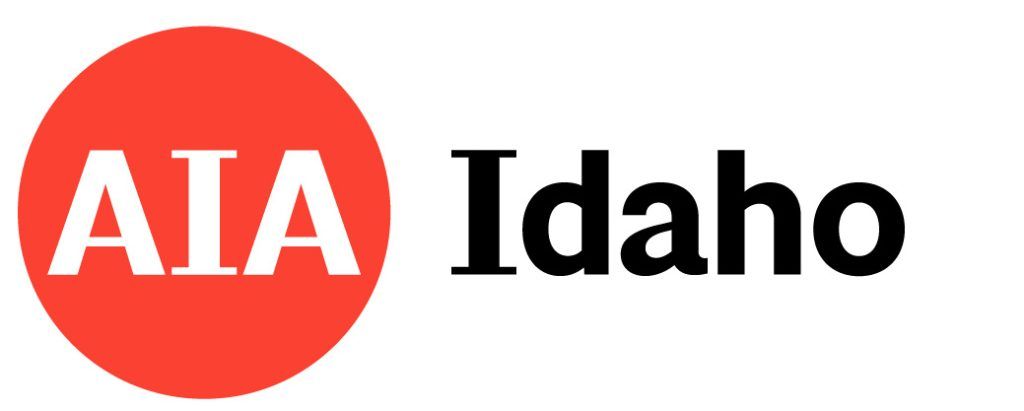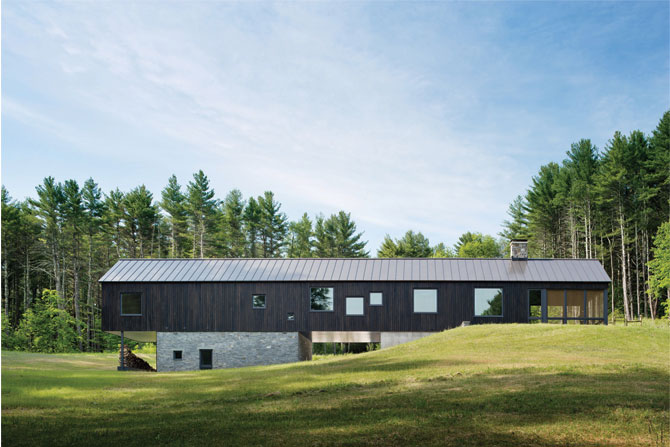
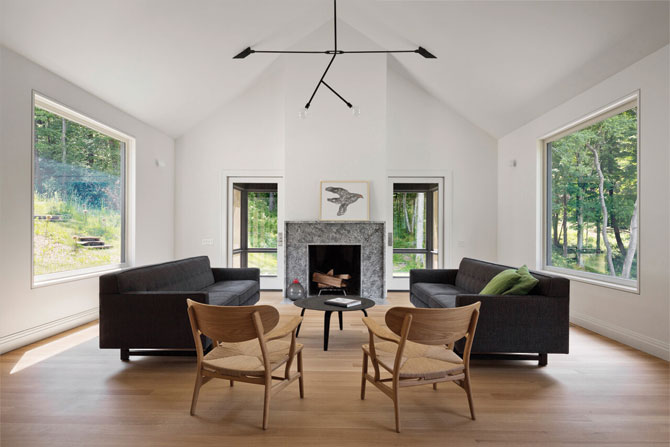
Why did you become an architect?
People, culture, and how a culture expresses itself have always interested me. I have studied music, languages and literature, but I became interested in architecture because it is tied to the physicality of a place. Architecture ties all my interests together and brings them into a reality that exists beyond me.
You have a B.A. from Amherst. What did you study?
I arrived at college late in the 1980s, intending to learn a foreign language and become a diplomat. I started with German, but the Iron Curtain had just dropped. I became fascinated by the USSR and was excited to learn about its hidden, mysterious and forbidden culture, so I began studying Russian.
You studied architecture at Yale University. What was the most important thing you learned there?
I had a fantastic professor at Yale named Alex Purves. He always used to say the idea is only 1% of the project. The most important thing I learned is how to take an idea floating in your head and translate it into a physical entity. As you become conscious of your process, you can control it and develop projects intentionally instead of by accident.
You were the executive director for the City of New York Public Design Commission. What was that experience like?
I had a phenomenal public sector experience. I worked in the Department of Design and Construction on the Design Excellence Program for 10 years before Mayor De Blasio appointed me to be Executive Director of the Public Design Commission at City Hall. The Design Excellence Program’s mission was to harness the deep field of architectural talent in New York City to produce world-class public buildings.
The commission reviews most capital projects designed on city-owned property, and it is responsible for ensuring a high level of design quality. I had a bird’s-eye view of everything that was happening. It was really edifying to see architecture and its effects on the built environment from this vantage point.
What has been the most significant work experience you’ve had so far during your career?
Architectural work involves weaving together processes that have many moving parts. The project is a bit like a basketball or soccer game. The ball is always in play, and everyone is constantly moving. You need to think simultaneously about the present and the future.
Opening and running a small firm with my husband and partner, Devin, feels like the biggest, most complex and never-ending architecture project of them all. You have to balance different needs, scales and paces.
There are three main pieces to balance:
- The office: We work to create a good office culture.
- Clients: It’s important to us to develop a good working relationship with our clients; projects often take a few years, and a relationship built on trust is a must for them to succeed. We also work to maintain a flow of new clients.
- Projects: To me, clients and projects are two distinct things. Our job is to manage projects for our clients and ensure they are built correctly.
How have the awards you’ve won as an architect affected your professional development?
I feel like awards are important for a few reasons:
- They establish us as good designers and architects, which gives us credibility with clients.
- It’s important to have a presence. Awards keep you relevant and in the public eye, especially within the architectural community.
- They may attract clients and people looking for work in our office.
- Seeing work through other people’s eyes provides helpful feedback that can teach us what does or doesn’t speak to them.
How and why did you and Devin O’Neill start O’Neill Rose Architecture?
I went to Amherst on a classical piano scholarship, and I also studied ballet. Until that point, art for me had always been playing somebody else’s music. I had never relied on my own creativity before. But I took an improvisational dance class where we would get on the stage to perform, and only then would the teacher give us a prompt. It was terrifying, but it was also so freeing.
There’s a difference between performing someone else’s work and your own, which is why many people in creative fields, including architecture, want to express their own point of view. Devin and I both had good experiences working in other firms. We worked in places that did good work and had steep learning curves. But we eventually wanted to explore and develop our own ideas.
Devin took the plunge first and worked on our first project. I joined him when we felt that we were established enough and were reasonably secure financially.
What has your experience been like as a juror for AIA Idaho annual award competition? How have the project evaluations you did for the competition influenced you professionally?
Before I was an architect, about 25 or 30 years ago, I lived in Ketchum for a year and a half. It was lovely and energizing to return there and meet with the Idaho design community from across the state. The region is different from the region I practice in, and I found a lot of outside inspiration.
People are brave to submit their work to scrutiny you get in a competition. The wide range of work generated great discussions about how people think about architecture now. Being a juror is like being in a design crucible. You focus intensely for one or two days in a room where you talk about architecture for hours, and then you meet the people who are competing and talk about architecture some more. The experience was very inspiring.
Which projects for the 2021 competition did you enjoy the most? Why?
I do a lot of residential work, so Michael Doty Associates Shaw Mesa Family Retreat in Custer County was a familiar typology. I had a gut reaction to that house. It was so beautifully sited, and the home itself was an incredibly clear, bold gesture in response to the site’s stunning natural beauty.
There were two other buildings I loved, one commercial and one public:
- The EnergySeal headquarters in McCall by VY Architecture
- Fire Station No. 8 in Boise by Cole Architects
Both were really well-designed buildings that were useful and engaging spaces. People don’t often expect these types of buildings to be beautifully designed. Architecture is a way of improving our experience of daily life, and good, thoughtful architecture can elevate an experience no matter what the building is.
In 2021, the World Population Review listed Idaho as the fastest-growing state in the U.S. Do you have any suggestions for Idaho’s architects as they meet the newcomers’ needs?
Nature has a physical presence in Idaho that is remarkable and powerful. It’s important to support “smart growth.” This means making your cities denser, so they are vibrant and full of life. It also means protecting Idaho’s resources by approaching growth intentionally.
There are many ways architects can participate in shaping growth beyond doing individual buildings – joining community boards or zoning commissions or getting involved in shaping policy. In addition to professional practice, your combined efforts will add up to intelligent growth.

